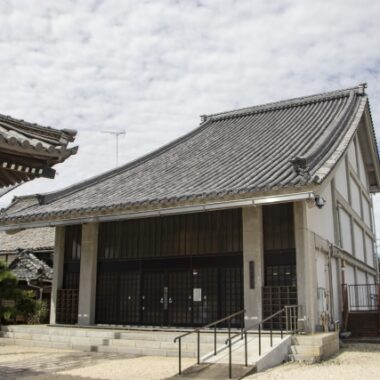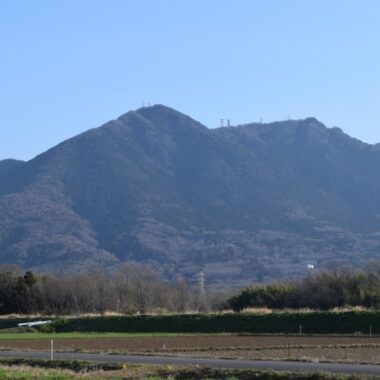目次
- 1 Effects of Relief Measures for Pollution Victims on the Initiation of Litigation
- 2 Relief Measures for Victims of Minamata Disease and Waiver of Right to Complaint
- 2.1 Regarding the legal nature of the non-prosecution agreement at the time of the application for remedies
- 2.2 On the existence of manifestation of intention in the consensus of non-prosecution
- 2.3 Has the non-prosecution agreement been effectively concluded?
- 2.4 Other circumstances that impede the effectiveness of a non-prosecution agreement
- 3 Impact of an Application for Relief Measures on Litigation Requirements
Effects of Relief Measures for Pollution Victims on the Initiation of Litigation
Is it impossible for the pollution victim who filed the application to institute a lawsuit if concrete remedial measures based on the remedy legislation for the pollution victim have been taken and the pollution victim has filed the application for the remedy?
Concretely speaking, the conclusions of this issue will differ depending on the positioning of the remedies and the circumstances such as the administrative procedures and manifestations of intentions carried out by the victims of pollution in the process from the application for remedies to the remedies (payment of settlement money, payment of medical expenses, etc.).
In considering this issue, we will examine what kind of procedures and manifestations of intention have been carried out in the course of relief in Minamata Disease, one of Japan’s typical pollution, and what kind of effects have been caused by these procedures and manifestations of intention on the lawsuit requirements.
Relief Measures for Victims of Minamata Disease and Waiver of Right to Complaint
The Law Concerning Special Measures Concerning the Relief of Health Damage Relief from Pollution (hereinafter referred to as the “Relief Law”) was enacted in 1969 as a relief measure for pollution victims targeting Minamata Disease. However, in response to the results of the first lawsuit for Minamata Disease, the Law Concerning Compensation for Pollution-Relief Health Damage (hereinafter referred to as the “Public Health Law”) was newly enacted, and the Relief Law was abolished.
The lawsuit against Minamata disease, which was filed after the enactment of the Public Health Law, is related to the definition of obligation under the Public Health Law. The lawsuit against the obligation under the Public Health Law itself is considered legal, and the Supreme Court has made substantial decisions on the lawsuit (see the appeal trial of Mr. F’s lawsuit on April 16, 2013). In the recent Kumamoto District Court on March 30, 2015 (the first instance of the Mizoguchi suit),
The part of the plaintiff’s action that requires the disposing administrative agency to make a decision on the payment of disability compensation expenses under Article 25, Paragraph 1 of the Public Health Law falls under the action set forth in Article 3, Paragraph 6, Item 2 of the Law Concerning Compensation for Disabilities.
It has been shown that the lawsuit required by the Public Health Law satisfies the lawsuit requirements, and there is no doubt that the lawsuit can be legally filed.
On the other hand, it does not appear that lawsuits requiring the relief of victims of Minamata Disease and the resolution of the Minamata Disease Problem enacted in 2009 (hereinafter referred to as the “Act on Special Measures”) have been filed to the extent confirmed at the present time, but there is no doubt as to whether the lawsuit requirements are satisfied.
Therefore, if a person who has filed an application for a remedy based on the Special Measures Law seeks a remedy in a judicial decision, it is likely that the person will first consider a claim for damages based on Article 1 of the National Compensation Law.
Incidentally, the relief measures under the Special Measures Law include the payment of lump-sum money, the payment of medical allowances, and the issuance of a notebook called a victim’s notebook (the applicant who received the three payments and issuance is hereinafter referred to as the “person eligible for lump-sum money, etc.”), or only the issuance of a victim’s notebook (the applicant who was only eligible for the victim’s notebook is hereinafter referred to as the “person eligible for medical expenses”).
In the Official Gazette, however, the application for the delivery of lump sum money and victim’s notes under the Special Measures Law is published on the condition that an agreement on the waiver of the right of action and debt release is agreed upon. When an application for a special action is filed, the victim of pollution is to submit an application form for benefits that states that the victim will apply based on the policy of remedies from the applicant to the applicant prefecture.
Therefore, it is probable that an agreement on non-prosecution and debt exemption (hereinafter referred to as a “non-prosecution agreement”) has been reached between the State and the prefecture of the applicant and the applicant upon the submission of this application.
When the applicant applies for the Special Measures Law,
I will apply for lump-sum payments, medical expenses (for medical expenses paid by myself), and medical allowances based on the policy of remedial measures (approved by the Cabinet on April 16, 2010).
And the “Benefit Application Form” printed in immovable letters is signed and stamped and submitted. “3. Cabinet decision on April 16, 2010” In (4) of Others,
A person who has already received compensation or relief for Minamata Disease and a person who wishes to receive compensation, etc. for damages related to Minamata Disease by means other than the application for recognition under Article 4, Paragraph 2 of the Compensation Act, the filing of lawsuits, or other relief measures may not be eligible for lump sum payments, etc. or persons eligible for medical care expenses.” In addition, those who are eligible for lump-sum payments will be promised not to take these measures in the future. “The same applies to the inability to take these measures while receiving the Minamata Disease Victim’s Handbook.
It is said.
In addition, page 12 of the leaflet entitled “Procedures for Applying for Benefits to Minamata Disease Victims” (hereinafter referred to as the “Leaflet for Procedures for Applying for Benefits”) prepared by the Ministry of the Environment for distribution to applicants at the time of receiving applications under the Special Measures Law states, “Those who fall under any of the following boxes shall not be eligible for benefits.” The boxes at the bottom of the page indicate “Those who file an action to rescind a disposition pertaining to Minamata Disease” and “Those who seek compensation for damages with respect to the symptoms also seen in Minamata Disease.” In the text on page 12,
In order to receive the benefits, it is necessary to take procedures such as application for recognition of Minamata disease and withdrawal of lawsuits.” Those who are eligible for lump-sum payments will be promised not to apply for the approval of Minamata Disease in the future. The same applies to the inability to take these measures while receiving the issuance of the Minamata Disease Victim’s Handbook….
It is written as …
Based on these facts, it is possible that not only those who are eligible for lump-sum payments under the Special Measures Act but also those who are eligible for medical treatment expenses may have agreed to not prosecute. (Furthermore, the applicant who is not eligible for not only lump-sum payments as a result of the medical examination but also those who are unable to receive even the issuance of the Minamata Disease Victim’s Handbook cannot be said to have agreed to not prosecute, so it is unlikely that the application under the Special Measures Act was filed in determining the satisfaction of the lawsuit requirements.)
If this is the case, the person who is subject only to the medical treatment expenses under the Special Measures Law will not be able to meet the lawsuit requirements in any of the obligatory lawsuit and the lawsuit for compensation for damages, and even if the lawsuit is filed, the claim may be dismissed.
However, since the right of a pollution victim to institute a lawsuit is also an important right guaranteed under the Constitution, it is necessary to carefully consider whether a non-prosecution agreement is legally established between the applicant and the State and the applicant prefecture (both of which are collectively referred to as the “State”).
By the way, it is not always clear what kind of legal character the non-prosecution agreement in the procedures aimed at relieving the victims of pollution is. Therefore, it is necessary to consider whether an agreement on non-prosecution has been reached between a person eligible for lump-sum payments, etc. under the Special Measures Law or a person eligible for medical treatment expenses alone and the national government, based on the legal nature of the non-prosecution agreement.
In this section, we will examine the legal nature of the agreement on whether the non-prosecution agreement is an administrative act or an administrative agreement, (ii) (if the agreement is an administrative agreement), whether the applicant and the applicant prefecture have expressed their intention to agree on non-prosecution, and (iii) whether the non-prosecution agreement could be effectively concluded if the agreement existed, and (iv) whether there are any other circumstances that hinder the effect of the non-prosecution agreement.
Regarding the legal nature of the non-prosecution agreement at the time of the application for remedies
Firstly, if the applicant prefecture considers the disposition to be an administrative action because the applicant prefecture takes a disposition to cause the applicant to lose the right to complain at the time of application for benefit, the existence and effectiveness of the manifestation of intention toward consensus on non-prosecution by the applicant will not be a serious problem, and the legality and appropriateness of the disposition as an administrative disposition will be examined.
However, given that the ㋐ Special Measures Law does not adopt the form of delegation legislation concerning specific remedies, and that remedies based on ㋑ remedies do not enforce any agreement, the agreement on non-prosecution arises from administrative contracts under non-powerful private law, and the effect of the agreement on non-prosecution is considered to be effective under private law.
Relief measures under the Act on Special Measures are not exclusive as a method of recovering victims of Minamata Disease (no restriction is imposed on making a claim for damages from the beginning without filing an application under the Act on Special Measures). Even if the words “Please promise” are used in various documents at the time of filing the application, as well as the fact that the State does not enforce the “agreement” without prosecution, it is honest to cancel this as an administrative contract not as an administrative act but as an act under private law.
Here, we will proceed with the discussion on the assumption that the agreement on non-prosecution is effective under private law.
On the existence of manifestation of intention in the consensus of non-prosecution
Next, the existence of a manifestation of intention toward consensus on non-prosecution will be examined. A. The words of the written application for benefits, a. The applicant’s intention at the time of submission of the application for benefits shall be examined in turn.
On the statement of the application for benefits
A person who applies for the Special Measures Law,
I will apply for lump-sum payments, medical expenses (for medical expenses paid by myself), and medical allowances based on the policy of remedial measures (approved by the Cabinet on April 16, 2010).
We have submitted application forms for benefits printed in immobile letters and letters. As mentioned in (2) above, the “Policy on Relief Measures (Cabinet Decision on April 16, 2010)” (hereinafter referred to as “Cabinet Decision” in this paragraph)
“Those who already wish to receive compensation, etc. for damages related to Minamata Disease by means other than instituting lawsuits or other remedies may not be eligible for lump sum payments, etc. or eligible for medical care expenses.” In addition, those who are eligible for lump-sum payments, etc. will be promised not to take these measures in the future….
It is said. Therefore, it is also possible to consider that the applicant, upon submission of this written application for benefits, has approved the framework of the policy of the Cabinet decision on remedies, i.e., the disadvantages due to a non-prosecution agreement, and then accepted the applicant’s intention to apply for benefits based on the policy of remedies based on the policy of remedies based on the policies of remedies, and has clarified the applicant’s intention to apply for benefits based on the policy of remedies. In view of this, it appears that there is formally a manifestation of the intention of the applicant to accept a non-prosecution agreement.
However, in the Cabinet Decision, it was said that “3… In “Others”
(3) With regard to lump-sum payments, a dispute shall be terminated between the relevant business operator, the State, and the relevant prefecture, and an agreement shall be concluded with the relevant business operator to the effect that there will be no dispute in the future, and then the lump-sum payments shall be paid.
Descriptions that lead to a non-prosecution agreement have been made, “2. There is no statement in the Minamata Disease Victims’ Handbook that would lead to such an agreement on non-prosecution. In view of this, although an agreement on non-prosecution is presupposed for the payment of the lump sum payment, there is no room to interpret that an agreement on non-prosecution is not presupposed for the delivery of the Minamata Disease Victim’s Handbook (payment of medical expenses only).
In addition, the application form for benefits states that “we will apply for lump-sum payments, medical care expenses (our own contribution to medical expenses), and medical care allowances.” It does not state that “we will apply for lump-sum payments, medical care expenses (our own contribution to medical expenses), and medical care allowances or medical care allowances.” According to the statement of this application form, the applicant is asking for three types of compensation: lump-sum payment, medical treatment expenses, and medical treatment allowances, and is not asking for the payment of medical treatment expenses alone. For this reason, there is no room to consider that the payment of medical care expenses alone is outside the scope of this application for benefits.
In this way, it seems unlikely that the statement of the application for benefits would be able to conclude that the applicant’s manifestation of intention toward the consensus of non-prosecution is comprehensive (regardless of the content of compensation) at the time of the application.
Regarding the ordinary intention of the applicant at the time of submission of the application for benefits
Next, we will consider the intention of the applicant. This question is: (a) the timing of submission of the application form for benefits; and (a) the language of the application form for benefits and the possibility of recognition by the general public of the Cabinet decision.
It has been stated that compensation under the Special Measures Law may be paid in sets of three types of compensation: ㋐ lump-sum payment, medical treatment expenses (issuance of Minamata Disease Victim’s Handbook), and medical treatment allowances, or only ㋑ medical treatment expenses (Minamata Disease Victim’s Handbook), depending on the results of the judgment of the Certification Committee that received the results of the examination. However, because the application for benefits is submitted prior to screening, the applicant does not know whether it is a ㋐ benefit or a ㋑ benefit (or whether it is a ㋐ or ㋑ benefit) when submitting the application for benefits. In addition, it is not possible to apply for benefits only for ㋐ applications (if it is judged to be subject to ㋑, there is no intention to apply for benefits). As a result, the applicant’s intention is to accept a non-prosecution agreement in order to receive ㋐ benefits. However, there is room for the applicant to consider that the applicant has no intention to accept a non-prosecution agreement by the ㋑ benefits alone.
How should the applicant’s reasonable intention in this case be captured? In considering this issue, we first consider what kind of compensation we expect to receive when submitting the application for benefits under the Special Measures Law.
Compensation for medical expenses by the Minamata Disease Victim’s Handbook is to compensate for the self-borne portion of medical expenses in the case of receiving ordinary insurance-applied treatment. Actual compensation, which is an economic benefit for the applicant, can be obtained only in the case of receiving treatment at the medical institution, etc. at the self-borne expense. Therefore, the Minamata Disease Victim’s Handbook cannot be said to be economically valuable from the viewpoint of people who hardly incur a certain number of medical institutions, such as hospitals, until just before death. On the other hand, if a person is eligible for lump-sum payments, economic profits of the lump-sum payments will be obtained in a definite manner.
Under the Civil Code, compensation for damages is based on monetary compensation (Article 417 of the Civil Code), and it is considered that there were a considerable number of people who thought that the same was true for damages caused by pollution (of course, this does not deny the request for apology). However, from such a point of view, the Minamata Disease Victim’s Handbook is not directly paid as a lump sum money. Therefore, the issuance of the Minamata Disease Victim’s Handbook cannot be regarded as a compensation that can be substituted for compensation for damages.
Given these circumstances, there were a considerable number of applicants who expected to receive three types of compensation: lump-sum payments, medical treatment allowances, and medical treatment expenses. If not only medical treatment expenses but also lump-sum payments were to be paid, they thought that further compensation would be abandoned thereafter. However, even if the application resulted in only medical expenses and only the victim’s handbook was issued, it could be said that it was trivially difficult to decide that the victim was willing to abandon further compensation thereafter.
Therefore, from the viewpoint of the applicant’s reasonable intention, it is difficult to consider that the applicant had submitted a written application for benefit on the assumption that the applicant is subject to ㋑ payment, and it is reasonable to consider that the applicant’s manifestation of intention toward the consensus of non-prosecution does not extend to cases subject to ㋑ payment.
However, what is problematic here is that applicants who are judged to be eligible for ㋑ benefits as the flow of application work are judged after the judgment and prior to the actual issuance.
I would like to issue a Minamata Disease Victim’s Handbook (medical expenses only), so please decide to issue a Minamata Disease Victim’s Handbook (medical expenses only).
It was supposed to submit a request for issuance with a description of the request. It may be possible to interpret the statement of this request for issuance as having completed the manifestation of intention toward an agreement on non-prosecution for those who are eligible for medical treatment expenses only at the time of submission of the request for issuance.
Has the non-prosecution agreement been effectively concluded?
In considering whether the consensus on non-prosecution could be effectively established, it is necessary to consider whether the manifestation of intention was not defective even if the applicant’s manifestation of intention toward the consensus on non-prosecution seems to exist in outline. In considering this, we will consider the possibility of recognizing the language of the written application for benefits and the contents of the Cabinet decision by the general public.
In this regard, the Benefit Applicant shall submit the Benefit Application Form
I will apply for lump-sum payments, medical expenses (for medical expenses paid by myself), and medical allowances based on the policy of remedial measures (approved by the Cabinet on April 16, 2010).
The question can be how you recognized the description.
First of all, we will examine how the applicant learned the contents of the Cabinet decision (hereinafter referred to simply as the “Cabinet decision”) on April 16, 2010.
In this regard, the Cabinet decision was published in the Official Gazette of No. 5315 dated May 20, 2010. The applicant may be aware of the contents of the Cabinet decision, and the contents of the Benefit Application Leaflet may also provide information on this matter. In addition, it can be said that it can be learned through other public relations activities (explanations before and at the time of application, etc.) carried out by the State or the applicant prefecture.
By the way, in view of the fact that acts that are considered to be manifestations of intention toward a non-prosecution agreement are carried out in the form of immovable letters prepared in advance by the administration in order to uniformly process applications from a large number of persons by the administration, it seems reasonable to consider that the non-prosecution agreement is not an individual contract, but is similar to the “clauses” at the time of the conclusion of an administrative contract. Therefore, we will examine whether a clause contract can be concluded even in such a case, and in what case a clause contract can be concluded.
Although the Civil Code prior to the revision did not contain any special provisions concerning the clauses,
It is the mainstream idea (contract theory) that the clauses will be bound only by an agreement to adopt them in a contract unless there is a special authority under the enactment law
see “Issues in the Civil Code” (Jurist Major Publication), page 219, “Policy Conditions” by Toyotomo Yamamoto
The precedent is a contract theory.
Issued by Masanobu Kato and Arihikaku in ” New Civil Code System IV Contract Act”
In general, it seems that the terms and conditions were considered to be binding only upon the agreement of the parties to the contract.
With regard to publicity in the Official Gazette, on October 15, 1958 (Seminar 12, No. 14, page 3313),
In order for the laws and regulations of the constitution to actually exercise (enforce) their binding power to the people in general, it is a prerequisite that the contents of the laws and regulations be placed in a state to be known to the general public….
It was judged that when the people were able to see the article in the Official Gazette for the first time (at the time of commencement of the sale, at present, they were able to read the Official Gazette on the Net, so that they were uploaded on the Net) was considered to have been “in a state that the general people should know.”
However, unlike the promulgation of laws and regulations, the provisions of the Civil Code before the revision seem to have been deemed to have been deemed to have been binding on the parties to the contract only upon the agreement of the parties to the contract. Therefore, it is conceivable that the parties to the contract (applicant) are deemed to be bound only when the applicant actually sees the article in the Official Gazette, and it is possible for the article in the Official Gazette to cause a non-prosecution agreement.
However, it is rarely seen by the general public in the Official Gazette or the like, and it is considered that a considerable number of people, including the applicant, did not know the contents of the Cabinet decision (in the first place, it is considered that there are a certain number of people who do not know the nature of the Official Gazette or the existence of the Official Gazette itself). Therefore, it is more difficult to read the agreement on non-prosecution of the Cabinet decision in the “Policy on Relief Measures” in the Official Gazette than to consider the agreement on non-prosecution as an act under private law, and it is considered difficult to recognize the conclusion of the agreement on non-prosecution based on the article in the Official Gazette.and.
Next, we will consider the revised Civil Code as a premise. In this case, if the compensation under the Special Measures Law is regarded as a contract between the applicant prefecture and the applicant, it can be regarded as a kind of regular transaction. If we consider the “Policy on Relief Measures” to be an incorporation-type clause, we can conclude that Article 548-2-1, item 2 of the Civil Code concludes an agreement between the applicant and the applicant prefecture on the “Policy on Relief Measures,” including the contents of the Cabinet decision, and that a non-prosecution agreement has also been reached. However, under Article 548-2-2 of the Civil Code, it is necessary to lose the right of the applicant to complain about the provision of compensation only for medical expenses (only the provision of the Minamata Disease Victim’s Record),
Clauses that restrict the rights of the other party or add to the obligations of the other party, which are deemed to unilaterally harm the interests of the other party contrary to the basic principle prescribed in Article 1, paragraph (2) in light of the mode of the regular transactions and the actual circumstances thereof, as well as the social norms of the transactions.
This is the case, and it is also considered that the agreement on non-prosecution shall be deemed to have not been agreed upon.
In this way, if the revised Civil Code is not a prerequisite, it would be difficult for the applicant to consider that a non-prosecution agreement would be reached only from the public notice in the Official Gazette without the circumstances that the applicant had seen the article. On the other hand, considering the revised Civil Code as a prerequisite, a formal consensus on non-prosecution can be granted, but if the applicant does not actually see the official gazette article, it is considered that the non-prosecution “was not agreed” because of the interests of the applicant and the applicant prefecture (state), and it is highly likely that the consensus on non-prosecution will not take effect. Unless the applicant actually reads or is readable to read the Official Gazette, it is very difficult to consider that an agreement on non-prosecution will be reached only by publication in the Official Gazette unless the revised Civil Code is presupposed, and it can be seen that it is quite difficult even if the revised Civil Code is presupposed.
Next, let us consider whether a non-prosecution agreement may arise from (ii) benefit application leaflets or (iii) public relations activities. If the applicant prefecture has issued a benefit application leaflet together with the form of the benefit application form at the time of the application for the delivery of the benefit application form from the applicant, the contents of the benefit application leaflet shall be construed to be similar to the articles of incorporation. In such a case, it is formally accepted that a non-prosecution agreement has been reached. However, even if the revised Civil Code is not presupposed, it is highly likely that the non-prosecution agreement will not be construed as being effective because Article 1, Paragraph 2 of the Civil Code (Article 548-2-2, Paragraph 2 to Article 1, Paragraph 2 of the revised Civil Code) presupposes that the non-prosecution agreement has not been reached because of the interests of the applicant and the applicant prefecture (state). This is also true when the applicant has been explained to the Cabinet regarding the “Policy on Relief Measures” through public relations activities.
Regarding the application for the Special Measures Law, it seems that some explanations and public relations activities concerning the application for the Special Measures Law in the areas affected by Minamata Disease under the Public Health Law were carried out, but it is doubtful that the parties concerned talk about whether sufficient explanations and public relations activities were carried out in other areas.
Given these circumstances, even if it seems that there is a formal manifestation of intention against the applicant’s consent to not prosecute, it seems to be quite difficult to consider that the consent to not prosecute has been effectively concluded if the agreement toward the consent to not prosecute is considered to be a contract for the terms and conditions of the administrative contract.
Other circumstances that impede the effectiveness of a non-prosecution agreement
Regarding the clause agreement,
Creators of clauses are usually entrepreneurs or organizations of entrepreneurs with a stronger bargaining capacity… especially when customers are economically vulnerable, they are usually unfamiliar with transactions and lack legal knowledge, so they often accept the application without reading the contents of the clauses or even being aware of the existence of the clauses. •••Even if you happen to understand the contents, there is no room for negotiation with economically weak customers, and there is only a “batch approval” or a “batch refusal” left there. If the clause creator is an monopoly or the competitor uses the same clause, the clause may not be chosen. ••Originally, the freedom of contract should not be arbitrary, but merely reasonable freedom. This is because unlimited freedom of contract devastates themselves and makes them “the means of one hold-down by the other.” ….
“Law Concerning Regulation of Terms and Conditions,” by Masaji Kawakami, published by Yuhikaku Co., Ltd., August 15, 1988, pp. 6-8, Yuhikaku
I believe. However, it goes without saying that there is a distinctive disparity in legal knowledge, economic power, and bargaining power between the State and the applicant in the case of an application for special litigation. The applicant has virtually no choice other than the “clause” of the policy of remedial measures as a method of seeking compensation for the damage of Minamata disease. It can be said that the applicant was placed in a position of “collectively accepting” or “collectively rejecting” the contents of the remedial measures without any room for negotiation with the State. From the above references, it can be said that there was a need for national guardianship and guarantees, such as measures to restore bargaining power in some way or to ensure that minimum standards are enforced.
Given this, it is conceivable that the State had an obligation to provide the applicant with an opportunity to explain to him carefully if the provisions of the waiver of the right of suit were comprehensively stipulated in the terms of the contract. In the absence of the explanation, even if the agreement on non-prosecution was formally established, it could be null and void due to the violation of the principle of trust.
Impact of an Application for Relief Measures on Litigation Requirements
In this way, with regard to the application for the Minamata Disease Special Measures Law, it is questionable whether a non-prosecution agreement can be concluded if the person who is subject to only medical treatment expenses requests remedies in a lawsuit, and it cannot be said that the request is dismissed without the benefit of the lawsuit.
Considering the issue of the application for remedy for the Minamata Disease Special Litigation, if a plurality of programs with different degrees of remedy are selected as the remedy method for pollution, it cannot be said that the application and compensation benefits for applicants who have been approved as the subjects of the remedy program with a low degree of remedy will not necessarily result in the lack of legal requirements. However, the existence or non-existence of lawsuit requirements may also depend on the degree of explanation at the time of application by the State or the applicant prefecture.












